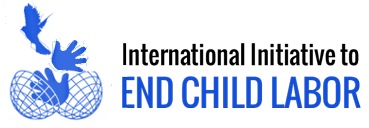What are the worst forms of child labor and what is hazardous work?
Combating child labor must take into consideration specific cultural and economic contexts. In fact, the World Bank suggests that ‘the concern of policy makers should be children’s welfare, rather than children’s work in itself’ (World Bank, 2001, page 3). Child work may be a necessary economic or cultural practice; and removing all children from work may not be in the best interest of the child.
To ensure that the work children perform is not hazardous or abusive, activities that a child performs and the conditions under which the child works needs to be examined. While hazardous and exploitive work is often based on the specific situation, the work of children can usually be defined as ‘acceptable’ work or worst forms of ‘child labor’ that need to be immediately confronted.
With less harmful forms of child labor, households can be encouraged to decrease the work load gradually. Wage employment away from the home, on the other hand, has a greater potential for exploitation and abuse. For example, domestic servants are often ill paid, work long hours and are the subject of physical and sexual abuse. Children working away from homes are also more likely to not attend school (World Bank, 2001). Street or migrant children that have no home are often the most vulnerable. By focusing on the most abusive forms of child labor first (as highlighted on the attached chart), families and service providers can prioritize needs and help those in greatest need.
When examining child labor in a particular country and planning intervention strategies, it is important to understand what job tasks and conditions of work are considered hazardous. Convention 182 on the Elimination of the Worst Forms of Child Labor of the International Labor Organization defines the term of ‘worst forms of child labor’ in Article 3 as:
a) all forms of slavery or practices similar to slavery, such as the sale and trafficking of children, debt bondage and serfdom and forced or compulsory labor, including forced or compulsory recruitment of children for use in armed conflict;
b) the use, procuring, or offering of a child for prostitution, for the production of pornography or for pornographic performances;
c) the use, procuring, or offering of a child for illicit activities, in particular for the production and trafficking of drugs as defined in the relevant international treaties; and
d) work that, by its nature or the circumstances in which it is carried out, is likely to harm the health, safety or morals of children.
Within Article 3, sections (a) through (c) are fairly well explained and defined. However, Article 3(d) requires further exploration. Once Convention 182 is ratified by a country and filed with the ILO, defining section (d) is largely left up to the country. The following provides ECACL’s interpretation of Article 3(d). The following was developed and discussed with representatives of the ILO and has been used during planning analyses that ECACL has conducted in numerous countries. ECACL recommends that the following tasks be considered when examining work that is ‘likely to harm the health, safety or morals of children’ under Article 3(d):
(a) work that exposes children to physical, psychological, or sexual abuse;
(b) work underground, under water, at dangerous heights, or in confined spaces;
(c) work with dangerous machinery, equipment and tools, or that involves the manual handling or transport of heavy loads;
(d) work in an unhealthy environment that may expose children to (include but not be limited to) hazardous substances, agents or processes, or to temperatures, noise levels, or vibrations damaging to their health; and
(e) work under particularly difficult conditions, including but not limited to work for long hours or during the night or work where the child is unreasonably confined to the premises of the employer.
